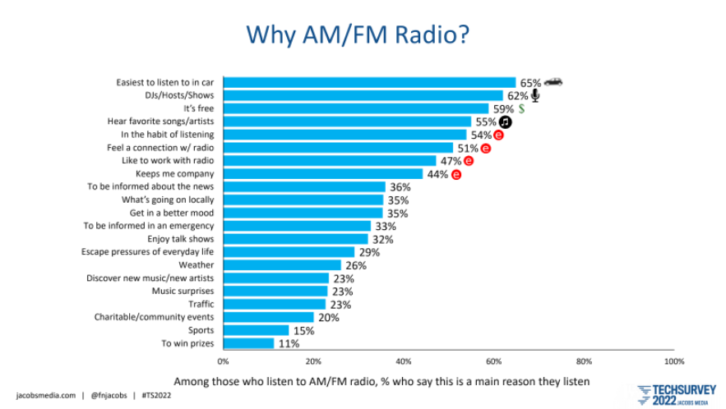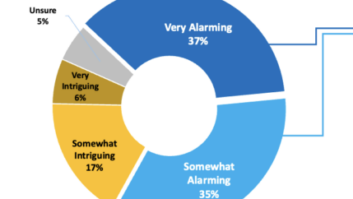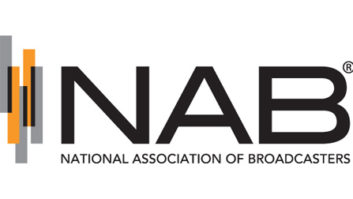Jacobs Media released details of its TechSurvey 2022 this week and it shows the number of radio listeners is still ticking down and is lowest among younger generations, but that’s nothing new. We also learn aging radio diehards are paying more attention to on-air personalities and hosts, long a hallmark of local radio.
The 18th annual web survey tracks listening habits and how radio listeners interact with the mediascape away from the radio, according to Fred Jacobs, president of Jacobs Media. The population spread of this year’s TechSurvey crew is 48% men and 52% female and leans a bit older with the biggest group 55-64 representing 36% of respondents.
Jacobs reviewed TechSurvey 2022 findings during a webinar on Tuesday, which shows an overall increase media usage
The annual project, which measures the amount of change in the tech space and its impact on radio broadcasters, surveys engaged radio listeners throughout the United States from more than 470 participating stations with some 31,000 respondents. Interviews took place in January and February of this year, according to Jacobs Media.
TechSurvey participants are core radio listeners, Jacobs said, generally with names taken from radio station listener databases. The web survey results parse media usage and tech trends, which is compiled from participating radio stations in a variety of formats. All responses are collected online and weighted using Nielsen 2021 market population data.
AM/FM listening on average is slowly trending down, according to TS 2022. The percent of people who listen to AM/FM radio on any kind of device for one hour or more each weekday stands at 86% in the most recent survey. That’s a dip from 88% in 2021 and 90% in 2020.
Jacobs said perhaps a more significant number is the 9% of respondents who say they listen to radio less than an hour a day and the 5% who listen to no radio whatsoever.
“So that’s 14% total listening to less than an hour of radio a day. And remember these are core radio listeners, but they are in fact gravitating away from radio,” he said. “That’s a concern when those core radio listeners are moving away from radio slowly but surely. And this is more significant obviously in younger generations.”
The generational listening breakdown shows the shriveling of levels from older to younger with 89% of Baby Boomers listening to radio an hour or more each weekday. But that percentage dips to only 73% for Gen Z.
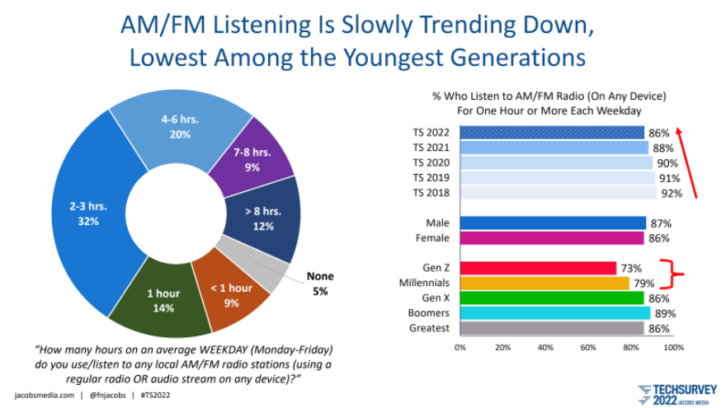
The number of listeners with radios in the home continues to be flat, according to TS 2022. Now eight in 10 listeners have a regular radio in their home, but that has remained fairly consistent the past several surveys, Jacobs said. Men are more likely than women to own a radio in the home while Millennials are least likely.
“So roughly a fifth of the sample does not have a regular radio in the home. And that is why streaming on a variety of devices become so critically important to the broadcast radio industry,” Jacobs said.
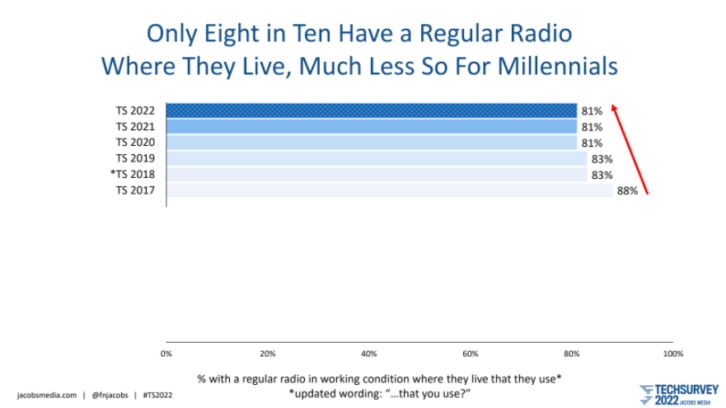
TS 2022 also looked at why people still listen to AM/FM radio and the result reflects the wide variety of reasons why they tune in. The main drivers of why people listen include the ease of listening to the radio in the car (65%) and personalities/DJ (62%). Jacobs said during his presentation emotional triggers are significant reasons why people listen.
“Emotional reasons to listen include habit, connection, and companionship. All of those things play major roles on how people listen to the radio,” Jacobs said.
This is the first in a series of stories examining the results from TechSurvey 2022. Read part two here.
Randy J. Stine has spent the past 40 years working in audio production and broadcast radio news. He joined Radio World in 1997 and covers new technology and regulatory issues. He has a B.A. in journalism from Michigan State University.
